Droid Incredible 4G LTE Preview: Is There Room For A 4" Smartphone?
by Jason Inofuentes on July 9, 2012 11:34 AM EST- Posted in
- HTC
- Verizon
- Droid Incredible 4G LTE
I’m working on the Droid Incredible 4G LTE review (there’s a delay resulting from a signal issue where I do battery testing), but in the interim let’s talk about something that seems to have come up about this phone. We don’t often discuss what’s happening on other review sites, even as they get their reviews out much faster than we, but the Incredible 4G LTE has been hit in many reviews for its display, and this surprised me. Let’s take a look at some numbers.
| Anonymized Display Data | |||||
| Contrast Ratio | 951 | 1418 | 746 | n/a | |
| Brightness - White (nits) | 571 | 427 | 484 | 318 | |
| Brightness - Black (nits) | 0.6 | 0.3 | 0.6 | 0 | |
| Stripe | RGB | RGB | RGB | RG,BG | |
|
Panel Technology |
IPS | IPS | IPS |
AMOLED |
|
| Pixel density (ppi) | 330 | 265 | 275 | 305 | |
These charts are our display test data, anonymized so we can do a little experiment. The phone data above includes the iPhone 4S, the Galaxy S 3, the original Motorola Droid and the Droid Incredible 4G LTE. Can you tell which is which? Just take a second. The original Droid was lauded for its IPS display and high pixel density, it was even described in some materials and reviews as ‘large’ at an iPhone besting 3.7 inches. It’s the second one from the left. The Galaxy S 3 is the current king of Android phone displays, and is massive at 4.8 inches, and with an excellent pixel density and picture quality, despite its PenTile roots; it’s the one far to the right. The iPhone 4 premiered with the highest pixel density in a mobile device we’d ever seen, and leveraged its IPS panel for excellent picture quality and viewing angles, and is rarely derided for being small; it’s the one to the far left. That leaves the Incredible 4G whose display isn't being dinged for the data above, but rather being hit for its size and resolution.
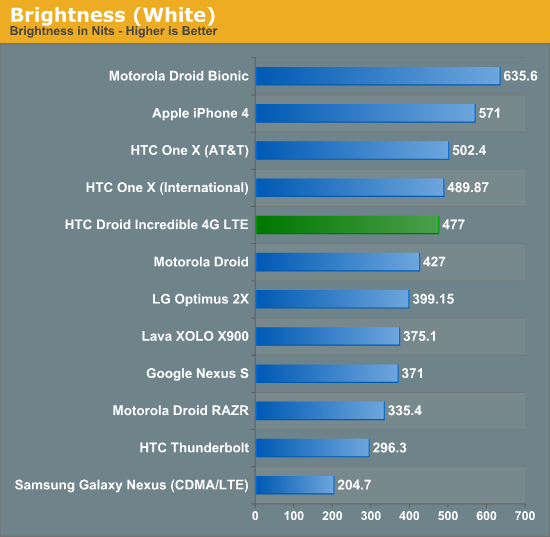
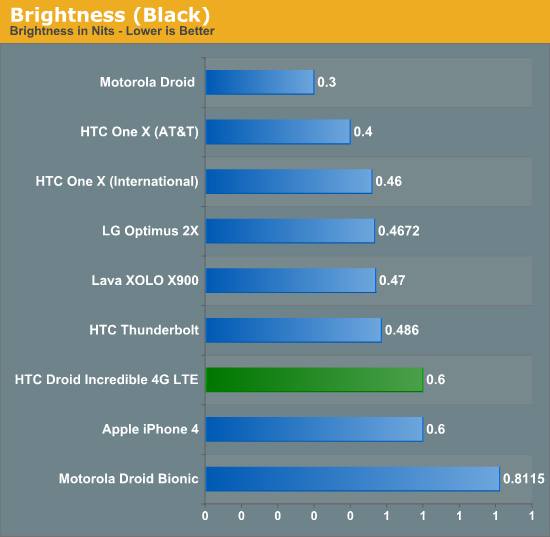
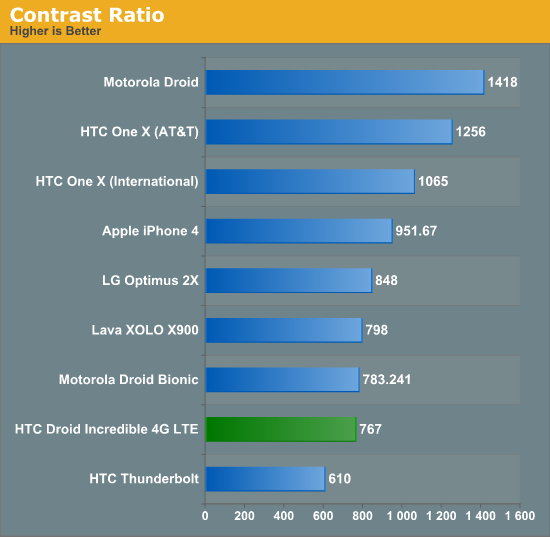
The Incredible 4G has better pixel density than the OG Droid (not so far off from the GS 3), is larger than the iPhone by a half an inch, and has excellent colors and viewing angles. So, why does it get so much grief? I’m not sure, but the disdain for it brings us to consider something else: Is there room for a 4” mid-range phone in today’s mobile market?
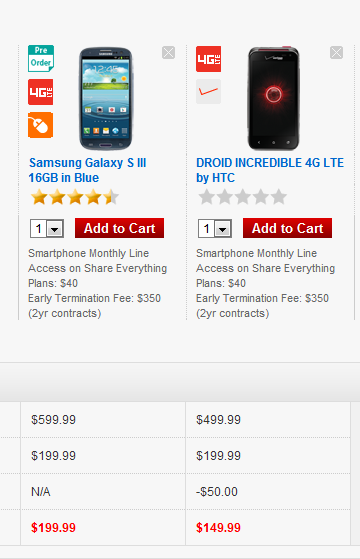
The sweet spot for cellphones in the US is $199, all thanks to the carrier subsidized model; MSRP’s of $649 are entirely concealed from the consumer, and every phone worth owning exists between $99 and $199. This price compression means that when you’re considering buying a new phone the difference between a mid-range phone and the top-of-the-line ‘halo’ device is usually just $50. Of course, this conceals the reality that the MSRP delta is often upwards of $149. So, how do you make a mid-range smartphone sell in this market? I’m not sure there’s a good answer, but here’s how Verizon is going about it. First they’re using branding that’s familiar to earlier buyers (whose contracts just came-up). Second, they’re including feature and spec deltas that provide a real world experience difference between the mid-range and ‘halo’ devices. Third, they’re not holding back on the advertising. The claims in their advertising are just as bold and brash as in any prior Droid campaign.








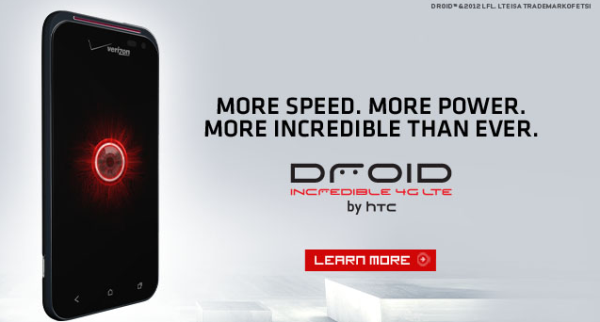
_thumb.jpg)
_thumb.jpg)
_thumb.jpg)
_thumb.jpg)
_thumb.jpg)
_thumb.jpg)








37 Comments
View All Comments
warisz00r - Tuesday, July 10, 2012 - link
"The iPhone 4 premiered with the highest pixel density in a mobile device we’d ever seen"If you discount HTC Rezound, Sony Xperia S and other phones with a 4.3", 720p screen, then yeah...
omikun - Tuesday, July 10, 2012 - link
Hence the word "premiered."EnzoFX - Tuesday, July 10, 2012 - link
Did those not come after?JasonInofuentes - Tuesday, July 10, 2012 - link
+1bearxor - Tuesday, July 10, 2012 - link
Wow. Reading comprehension FTL.eldwraith - Tuesday, July 10, 2012 - link
Well, you only picked phones that came after IPhone 4. I remember Sharp made phones with a higher density years before the 1st gen IPhone. I think Apple made a huge difference, and don't kill me because that is my opinion, and you all should have one too. The way reviews sensationalized the pixel density was just funny to me. Nobody was complaining about it then the retina display came into play. Maybe they didn't know there has been that screen technology for year. I don't know. So OP, good point, but bad examples.JasonInofuentes - Wednesday, July 11, 2012 - link
Not following the Japanese mobile phone space, I had trouble finding references to these Sharp JDM phones, indeed the only one I found was the Fulltouch, a feature phone. I'm not saying no one had thought of higher density displays previously, indeed the Motorola Droid was no slouch in pixel density and it came out 9 months before the iPhone 4. But the actual race to get these displays into more phones was late in coming and for the US market was first to trumpet its density.ahar - Tuesday, July 10, 2012 - link
Unless any of those other phones were released before the iPhone 4, the statement is correct.Drag0nFire - Tuesday, July 10, 2012 - link
I'm really curious how the "bigger = better" thing got started for smartphones. Everyone acts like a 4.8" phone is intrinsically better than a 3.7" or a 4" phone (including many reviewers). But if a 4" phone fits better in my pocket, isn't that worth considering?Anyways, thanks for an insightful article. Looking forward to the full review!
PubFiction - Tuesday, July 10, 2012 - link
I think it is all stupid and ignored. Size is a choice not better or worse, I mean ya a bigger phone is better but it comes at a cost of convienience and mobility.IMO all these companies need to focus on releasing 3 phones, 3", 4", 5" and let the consumer decide.
Imagine if you went to buy a laptop and they said sorry we are apple we ONLY sell 13 inch laptops, and samsung said well if you want something nice it only comes in the 17 inch version? Seems ridiculous so why do we put up with it on phones.
Don't get me started on the fact it took many years for the galaxy note to finally put a stylus holder back on a phone. And keyboards are not even an option with a good phone on carriers now.
Basically phones are giving us less choice than ever now to fit our lifestyles. Sometimes I think they do a better job making the feature phones than the high end ones.